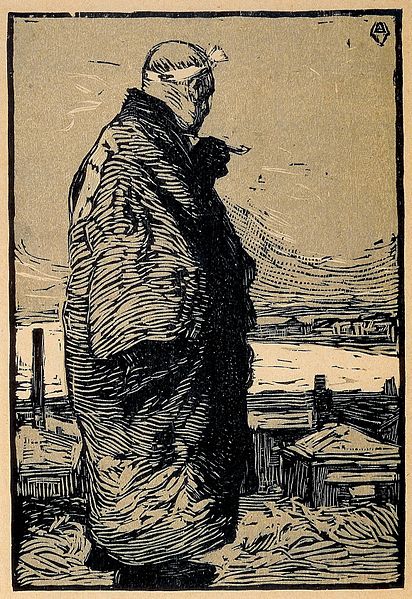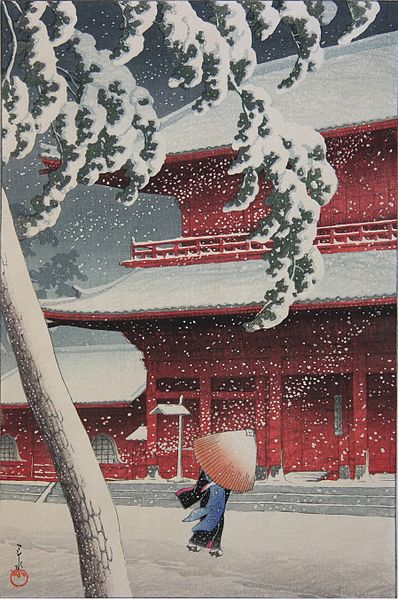Sōsaku-hanga was an art movement of woodblock printing which was conceived in early 20th-century Japan. It stressed the artist as the sole creator motivated by a desire for self-expression, and advocated principles of art that is "self-drawn", "self-carved" and "self-printed". As opposed to the parallel shin-hanga movement that maintained the traditional ukiyo-e collaborative system where the artist, carver, printer, and publisher engaged in division of labor.
Kanae Yamamoto's "Fisherman" (1904)
Portrait of Hagiwara Sakutarô (Onchi Kôshirô, 1943)
Woodblock printing in Japan
Woodblock printing in Japan is a technique best known for its use in the ukiyo-e artistic genre of single sheets, but it was also used for printing books in the same period. Invented in China during the Tang Dynasty, woodblock printing was widely adopted in Japan during the Edo period (1603–1868). It is similar to woodcut in Western printmaking in some regards, but was widely used for text as well as images. The Japanese mokuhanga technique differs in that it uses water-based inks—as opposed to Western woodcut, which typically uses oil-based inks. The Japanese water-based inks provide a wide range of vivid colors, glazes, and transparency.
The Great Wave off Kanagawa (神奈川沖浪裏, Kanagawa-oki nami-ura) print by Hokusai Metropolitan Museum of Art
Saga-bon (嵯峨本, Saga Books): libretto for the Noh play Katsuragi by Hon'ami Kōetsu. The Saga-bon is one of the earliest works produced on a movable type press in Japan.
Ukiyo-e based on kabuki actors became popular. Ichikawa Danjūrō V in the popular kabuki play Shibaraku, by Utagawa Kunimasa, 1796
Zōjō-ji in Shiba. From series Twenty Views of Tōkyō by Hasui Kawase, a shin-hanga artist.






